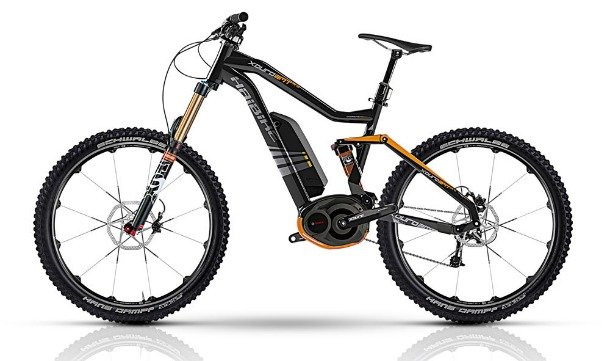If you already own a regular bicycle and want to upgrade into an electric bike, you can easily do so at a fraction of the cost of buying a new factory e-bike. Plus, you can do it yourself at home without any expert help. Bike conversion kits are easily available these days that allow you to convert your bike into an e-bike.
Converting your bike into an e-bike has many advantages. The best of all, you can enjoy more and more cycling opportunities with an electric motor backing you up. So instead of using a bike for maintaining fitness and exercising only once in a day, you can actually use it for day-to-day commuting and as an alternative to a car or a scooter, which are not only expensive but also environmentally hazardous. Plus, even with the electric motor backing you up, you will still be pedaling your way to work and that means exercise – though non strenuous – and better health.

Buying a conversion kit
 To convert a bike into an electric bike, you will first need a conversion kit. But when looking for one, you will be daunted by the amount of choices you have and the different wattage ratings of kits available. If you are new to this, you will have no idea about what to buy. Here is some info you should know.
To convert a bike into an electric bike, you will first need a conversion kit. But when looking for one, you will be daunted by the amount of choices you have and the different wattage ratings of kits available. If you are new to this, you will have no idea about what to buy. Here is some info you should know.
The Wattage rating is calculated by multiplying the Volts with the Amps. So a 36V kit with a controller that can use maximum 20 amps is 36×20= 720W.
Mostly every rider who rides an electric bike wants just a little more power. The power limit depends on the amount of heat the motor can survive. Like, if you start adding up more amps from the controller, it will result in faster acceleration but then the motor will heat up and overheating can cause parts to melt. A good way to use amps is to add up more amps when speeding up and when the ideal speed is achieved, allow the motor to cool down by reducing the amps.
When buying conversion kits, look at their rating and determine how much power you need. Like if you live in a hilly region, look for more power that can handle steep hills but if you live in a flat region, power like 500-700W would be fine. Look at their continuous power rating. For example, a motor operates at 1200W maximum power but can only give 500W continuous power.
Most conversion kits these days come in hub-motors, which are motors already installed in a wheel. So all you do is replace the wheel of your bike and connect the batteries, controller and brake lever.
Fix your bike
Make sure the bike is sturdy and is in good shape. Fix all issues like brakes and gears before converting it. When 20 pounds of electric stuff is added onto the bikes, all issues will only be modified. Paint the bike too, if needed.
Install the kit
Installing the wheel will require some mechanics. If you are good at it, you can handle it yourself otherwise take it to a bike mechanic who can install the wheel for you.
Next, find out where the batteries will go. Most bikes require a rear rack so, make sure you have one. Batteries should be installed in a battery box for protection. These boxes will have to be drilled and properly fixed to the rack. Both the battery and controller will be installed in the box.
Then install the brake/gear and on/off switches. These mostly go into the handlebars where your old gear levers are. You will have to remove your handlebars and install the new switches. Then carefully dress the wires to the back and connect them to the controller, making sure there is a slack around the head tube. Lastly, attach the wires to the frame using zip-ties.
This is just the beginning of the fun. When you are done, go for a test ride to see how it works.



